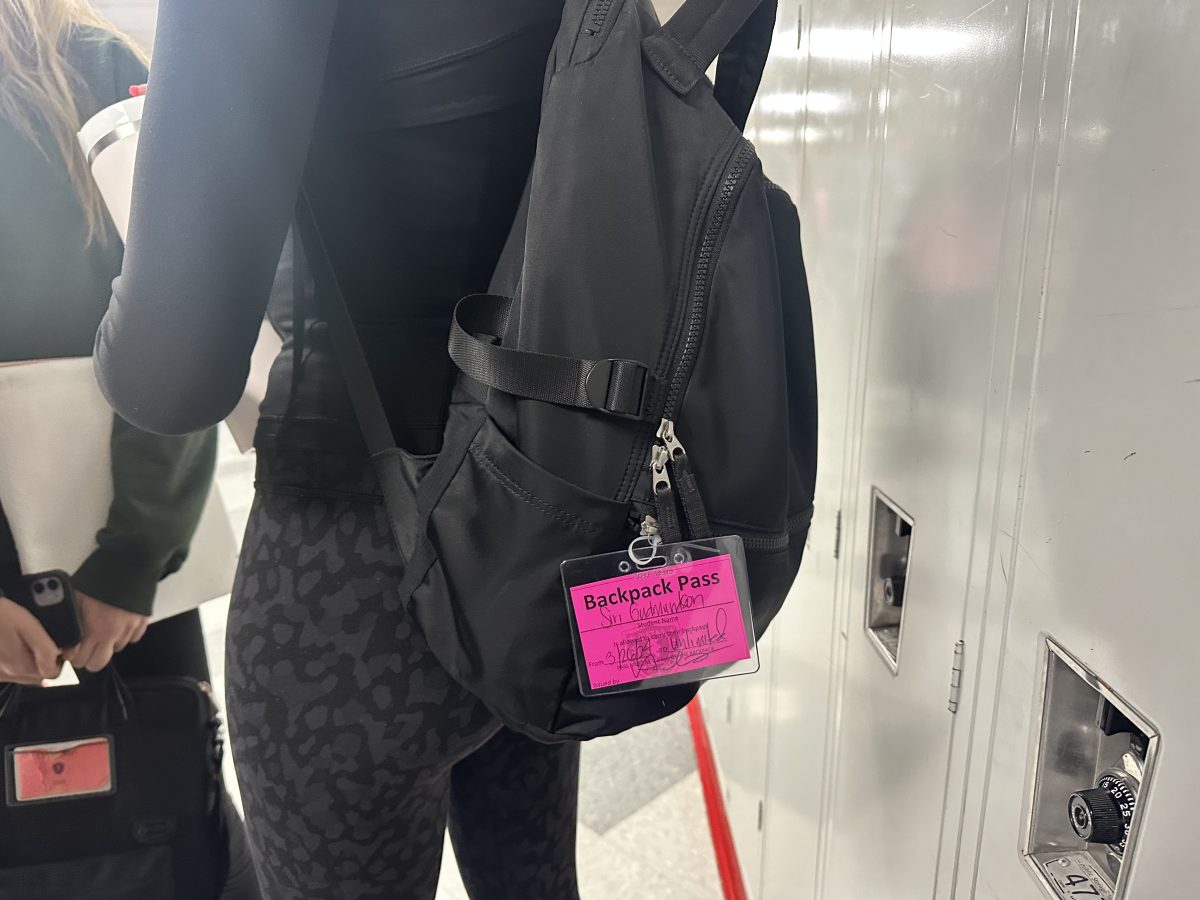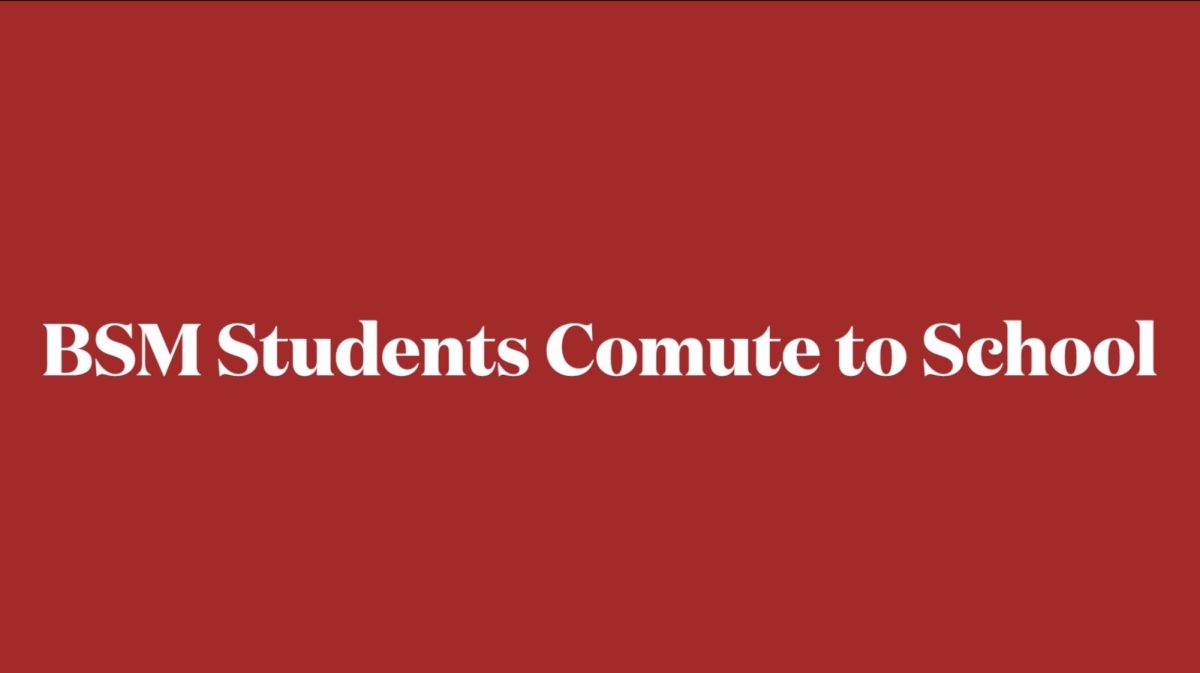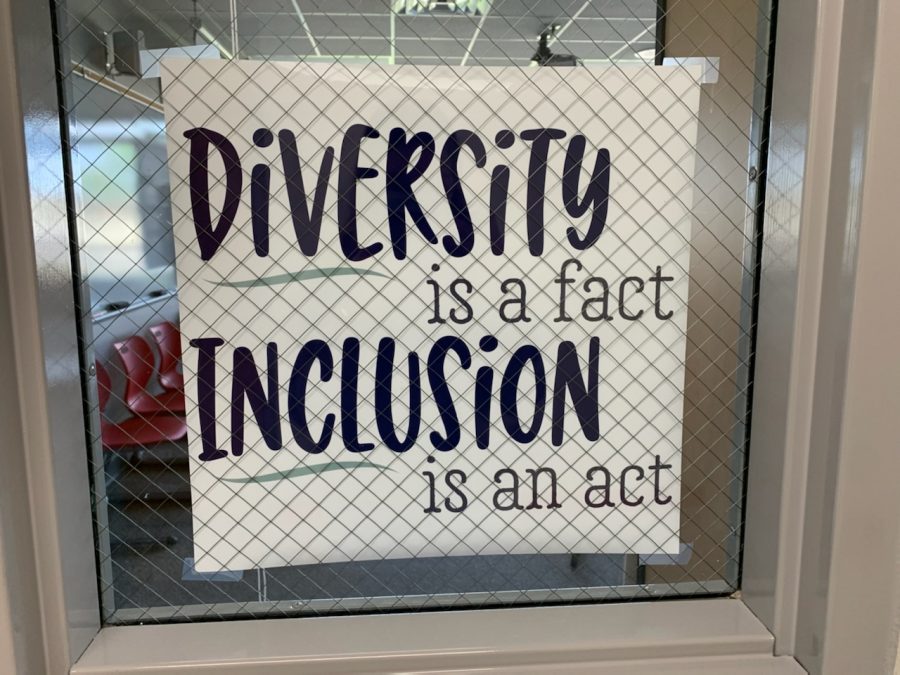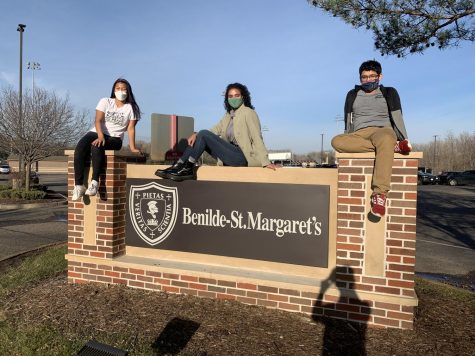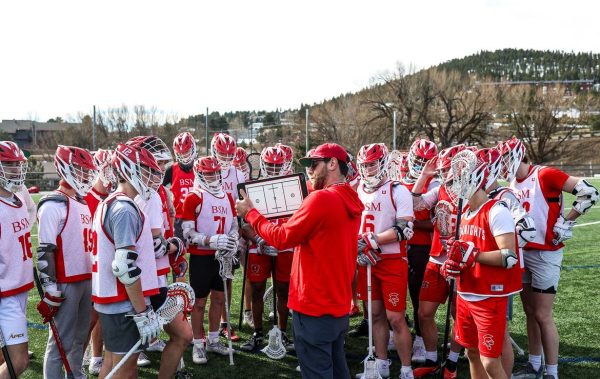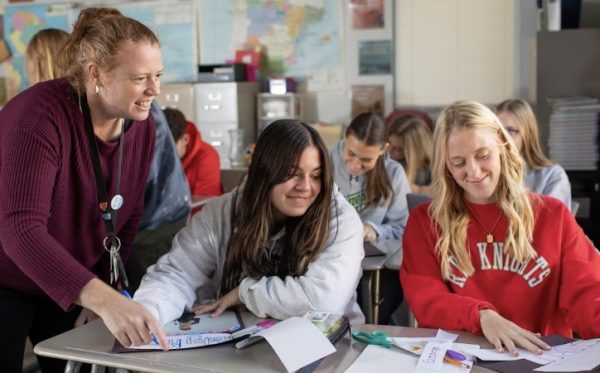From DEI to EIB: BSM Updates its Plan for Inclusion
BSM designated room 143 as the EIB center for students.
In August of 2020, Benilde-St. Margaret’s began working towards a comprehensive Diversity, Equity, and Inclusion (DEI) plan to improve life at BSM for minority students. The plan has since been renamed the Equity, Inclusion and Belonging (EIB) plan and presented to the school board.
The EIB plan has a variety of initiatives that will take place over preset time periods, usually three or five years. Each initiative is based on one of four key pillars that make up the plan. “The plan ends up being four pillars… The first pillar is student empowerment, the second is faculty and staff engagement, the third is administrative stewardship, the fourth community fellowship,” Director of Mission Lisa Lenhart-Murphy said.
The targeted areas were not identified by BSM alone. In late August, DEI consultant Kendra Dodd was hired to analyze the equity situation at BSM by talking with students, parents, and teachers. “She did a bunch of assessments: she did focus groups with parents and students, and surveys… and collected all kinds of data from around our community about the issues of equity and inclusion… Kendra Dodd helped us see ourselves more clearly,” Lenhart-Murphy said.
The first pillar of student empowerment focuses on encouraging students to use their voices and speak on issues that they care about. Students will get new ways to discuss with the administration directly, rather than just talking to each other. “We talk a lot in the plan about communication between students and administration… more opportunities for students to have direct communication with administration,” Lenhart-Murphy said.
Faculty and staff engagement is focused around training BSM employees to support belonging and inclusivity whenever students gather. Although this training was previously aimed at mainly teachers, a key goal of the plan is to expand its reach. “We do a lot of training with faculty, but we’re going to expand it… to staff, coaches, and advisors because they really do spend a lot of time with our students. Teachers are going to have the opportunity to have individualized training… we’re going to also take that and expand it to coaches, advisors, and staff,” Lenhart-Murphy said.
The third pillar of administrative stewardship is built around ideas of transparency and accountability. Previously, most of the blame for equity issues fell on high-level administrators. This goal is hoping to change that. “The president, administrators, and all faculty and staff will assume responsibility for the careful management of the EIB resources and personnel…instead of just the president being responsible to make sure equity and inclusion is a department that’s thriving… it’s directly administrators and faculty and staff. It’s not okay to think, ‘That’s somebody else’s job,’” Lenhart-Murphy said.
The final pillar is community fellowship. This pillar prioritizes the action of every member of the BSM community to create an atmosphere that can support everyone. “What that support looks like is different for each person. Some people can give of their time, some can give of their resources,” Lenhart-Murphy said.
Although BSM’s EIB plan is a new addition, it is guided by the same values that shape every other policy or plan at the school. “We’re a Christian organization, and that informs everything we do. And it always has. Those values are used in any decisions that we make in any area in the running of the school,” Lenhart-Murphy said.




